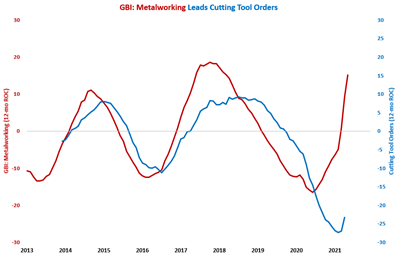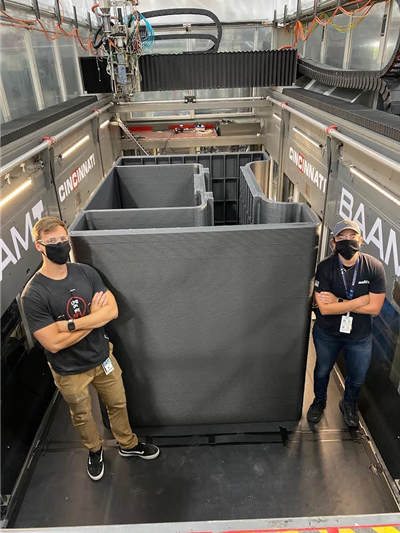Share







Hwacheon Machinery America, Inc.
Featured Content
View More
As parts get larger, so do cutting tools. But larger tools means heavier tools, which can lead to issues such as damage to the machine tool and tools that drop out of the spindle. Star SU Neher is using 3D printing to reduce the weight of some of these tools. Photos courtesy of Star SU Neher.
There’s a growing need for larger cutting tools that’s being driven by larger parts in end markets such as aerospace and automotive. This is particularly true for electric vehicles, which have stator housings that can be larger than 230 mm. But larger cutting tools means heavier cutting tools, which can cause a range of problems including spindle damage, tools that fall out of the spindle and added noise. To avoid these issues, manufacturers might have to invest in machine tools with specially designed spindle interfaces. These concerns have also led the aerospace industry to establish guidelines to limit the weight of cutting tools.
Cutting tool manufacturer Star SU Neher has adopted another approach: 3D-printing tool bodies to not only bring larger cutters in line with weight requirements, but also to ensure they outperform and outlast more conventional counterparts.
Tools of the Trade
Most of the 3D printed tools are monoblock designs (with the holder integrated into the tool body for added rigidity) for reaming, circular interpolation, milling and face milling operations. Jamie Dunneback, round tools sales manager at Star SU, says that these tools can become large and complex, with different forms that allow them to machine larger features. Christian Matheis, a tool designer at Neher Group, says that adding honeycomb-shaped internal lattice structures can reduce the weight of these tools by as much as 30 percent without compromising torsional strength.
The company custom designs most of these tools, and then 3D prints them on a DMG MORI Lasertec 30 Dual selective laser melting (SLM) system.
Although the company 3D prints some standard tool bodies (such as the NEHMO Long Life line, which can be customized with different edge geometries), 99% of 3D printed tools are custom, Matheis says. “We design every tool to the part’s needs,” he explains. All of the 3D printing is done at Neher’s facility in Germany, where it uses a DMG MORI Lasertec 30 Dual selective laser melting (SLM) system to produce tool bodies in titanium, aluminum, steel and stainless steel.
By adding internal lattice structures to the tool bodies, tool designers can reduce weight by as much as 30 percent while maintaining torsional strength.
Benefits
In addition to bringing cutting tools in line with aerospace industry requirements, lightweighting can bring a range of benefits. For one, they’re easier on the machine tool. “It reduces preventive maintenance, especially on the spindles,” Dunneback explains. For another, lighter cutting tools are less likely to drop out of the spindle, which is a big concern, especially with horizontal machining centers. They’re quieter, too, helping users met OSHAA noise requirements. And they can be run on a wider range of machine tools. For example, a machine with an HSK 63 spindle interface can’t run heavy cutting tools that require an HSK 100 interface, Dunneback explains. However, 3D printed versions of the same tools could be light enough for the HSK 63 interface.
Tests of the 3D printed NEHMO Long Life face milling tool have also demonstrated tool life improvements of as much as 40 percent compared to conventionally produced tools, Matheis says. This is partially because 3D printing enables the company to add optimized coolant channels to the cutting tool. Traditionally, coolant channels in cutting tools are drilled, which limits their design and therefore their effectiveness. 3D printed tools can incorporate channels that deliver coolant to the cutting edge more effectively. Improved coolant flow can increase metal removal rates by as much as 30%, Matheis says, and it can help users implement minimum quantity lubrication (MQL).
3D printed tools also have improved balance, which further extends tool life. According to Matheis, this is partially due to the accuracy of the 3D printing process and the possibility to add a passive attenuator.
In addition to lightweighting, 3D printing enables tool designers to add optimized channels that direct control coolant flow to the cutting edges. The company says this can increase tool life by as much as 40% and metal removal rates by as much as 30% while helping users implement minimum quality lubrication.
Additionally, 3D printing enables the tool designers to add features that aid in chip evacuation. Matheis says that internal coolant channels can flush the chips through the tool and out of the workzone. Incorporating chip deflectors into tool designs further aids in chip evacuation.
3D printing is a good fit for custom tooling because of the one-off nature of the parts. According to Matheis, 3D printing isn’t necessarily faster than conventional machining (a large tool body that takes up the entire print bed takes about 24 hours to produce, while several smaller tool bodies can be printed in a single batch as well), but it does reduce the number of machines and processes required. Whereas conventionally machined tool bodies require milling and turning, post-processing of 3D printed tool bodies is typically limited to brazing the PCD tips into the tool body and lasering or eroding the cutting edges.
Brazed inserts for 3D printed tools can be reconditioned just as many times as a conventionally machined cutting tool, Dunneback says. And even if the tool was printed in Germany, it can be reconditioned at the company’s facility in North America. “We have a facility here in Farmington Hills, Michigan, to recondition or alter the tool with fast turnaround,” he says.
Related Content
Selecting a Thread Mill That Matches Your Needs
Threading tools with the flexibility to thread a broad variety of holes provide the agility many shops need to stay competitive. They may be the only solution for many difficult materials.
Read MoreQuick-Change Tool Heads Reduce Setup on Swiss-Type Turning Centers
This new quick-change tooling system enables shops to get more production from their Swiss turning centers through reduced tool setup time and matches the performance of a solid tool.
Read MoreHow to Troubleshoot Issues With Tool Life
Diagnosing when a tool is failing is important because it sets an expectation and a benchmark for improvements. Finding out why gives us a clue for how to fix it.
Read MoreShoulder Milling Cuts Racing Part's Cycle Time By Over 50%
Pairing a shoulder mill with a five-axis machine has cut costs and cycle times for one of TTI Machine’s parts, enabling it to support a niche racing community.
Read MoreRead Next
Cutting Tool Orders Grow for First Time Since September 2019
The annual rate of change in the GBI: Metalworking grew at an accelerating rate for the third consecutive month.
Read MoreInside Oak Ridge’s 3D-Printed Machine Tool Moonshot
The widespread outsourcing of large machine castings led a collaborative team at Oak Ridge National Laboratory to tackle the machine tool supply chain. The first step? 3D print the largest cast component.
Read MoreHow to Manage Cutting Tool Inventory in a Small Job Shop — The One-Person Shop #4
Working in short lead times means maintaining a large range of tools to be ready. What is the right way to stock and organize this investment?
Read More




























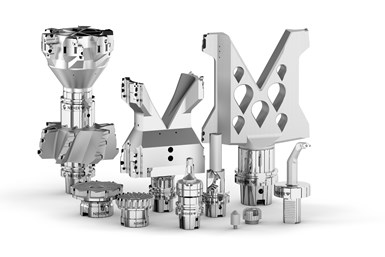



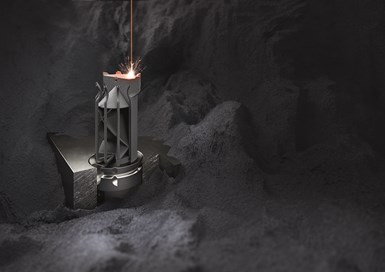
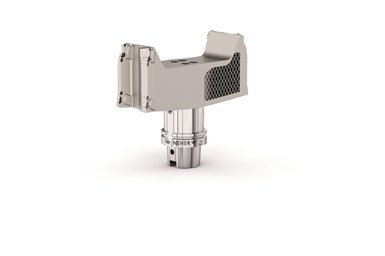



.png;maxWidth=300;quality=90)









